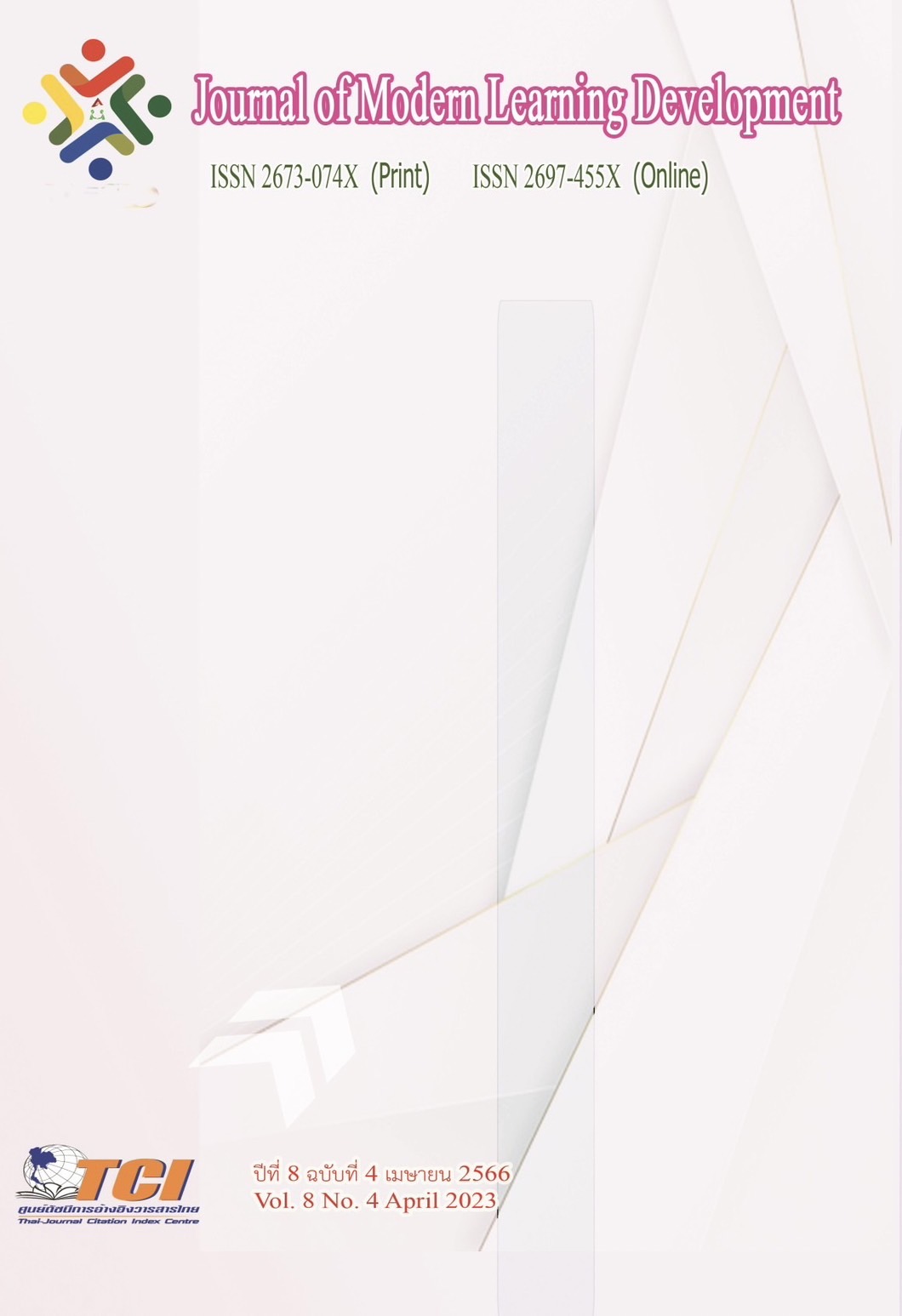Competency of Immigration Police in the Northeastern Region of Thailand 4.0 Era that Influences Operational Achievement
Main Article Content
Abstract
The purposes of this research were 1) to study the level of competencies in the immigration police, 2) to investigate the level of performance achievement of the immigration police, 3) to analyze the competencies of the immigration police inspecting Immigrants in the Northeastern region in the Thailand 4.0 era affecting the performance achievement, and 4) to design a model for developing the competencies of the immigration police in the regional area Northeastern Thailand in the 4.0 era. The mixed research method of quantitative and qualitative research. Was employed for the study. The samples were two hundred and sixty seven research participants for the quantitative research. The sample size was calculating by using the Taro Yamane formula. The research instrument was a questionnaire. The research statistics used were frequency, percentage, mean, and standard deviation. Pearson's correlation coefficient was employed for hypothesis testing at the .05 level of the statistical significance, and the stepwise multiple regression analysis was used for qualitative research at the .01 level of the statistical significance. The qualitative data was collected by in-depth interview of eighteen key informants.
The research results showed that 1) the overall competency of the immigration police was at a very high level. 2) The average achievement of the immigration police in the performance was at a high level. 3) Twelve factors affecting the performance achivement of the immigration police in the northeastern region of Thailand in the 4.0 era consisted of achievement motivation (X1), integrity and ethics (X4), information accessibility and assessment (X8), knowledge of information technology (X6), application of information technology for management and performance assessment (X10), ability in investigating and reporting news (X12), regulations and laws relating to (X11), knowledge and use of foreign languages or the 3rd languages (X15), English skills (X14), open mind factor (X16), intelligence and creativity (X17), and knowledge and understanding about the culture of people (X19). 4) The model for competency development of the immigration police in the northeastern region of Thailand in the 4.0 era included thirteen factors: good governance, achievement motivation, integrity and ethics, knowledg of technology, knowledge of regulations and laws relating to, ability in investigation and reporting news, knowledge and use of dialect languages and 3rd languages, English skills, open minded factor, intelligence and creativity, knowledge and understanding about the culture of people, and flexibility.
Article Details
References
กองบังคับการอำนวยการ, สำนักงานตรวจคนเข้าเมือง. (2559). คู่มือการประเมินผลสัมฤทธิ์ในการ ปฏิบัติราชการตามคำรับรองการปฏิบัติราชการประจำปีงบประมาณ พ.ศ. 2559 ของ สำนักงานตรวจคนเข้าเมือง. กรุงเทพมหานคร: โรงพิมพ์ตำรวจ.
กองบังคับการอำนวนการ, สำนักงานตรวจคนเข้าเมือง. (2563). รายงานจำนวนกำลังพล ประจำปี พ.ศ. 2563. กรุงเทพมหานคร: โรงพิมพ์ตำรวจ. กองบัญชาการศึกษา.
สำนักงานตำรวจแห่งชาติ. (2561). ยุทธศาสตร์และภารกิจของสำนักงานตรวจ คนเข้าเมือง. กรุงเทพมหานคร: โรงพิมพ์ตำรวจ.
สำนักงานคณะกรรมการข้าราชการพลเรือน. (2548). สมรรถนะต้นแบบ (Competency Model) สำหรับข้าราชการพลเรือนไทย. กรุงเทพมหานคร: สำนักงานคณะกรรมการข้าราชการพลเรือน.
คณะกรรมการ ข้าราชการพลเรือน. (2552). มาตรฐานและแนวทางการกำหนดความรู้ความสามารถ ทักษะ และสมรรถนะที่ จำเป็นสำหรับตำแหน่งข้าราชการพลเรือนสามัญ. กรุงเทพมหานคร: สำนักงานคณะกรรมการข้าราชการพลเรือน.
วัชรินทร์ สุทธิศัย, สิทธิพรร์ สุนทร และคณะ. (2563). ปัจจัยที่มีอิทธิพลต่อขวัญกำลังใจในการปฏิบัติงานของบุคลากรองค์การบริหารส่วนตำบลในพื้นที่กลุ่มจังหวัดภาคตะวันออกเฉียงเหนือตอนบน 1 ของประเทศไทย. วารสารเซนต์จอห์น มหาวิทยาลัยเซ็นต์จอห์น. 33 (23), 37-38.
Yamane. (1973). Statistics an Introductory Analysis. New York: Harper and Row.


